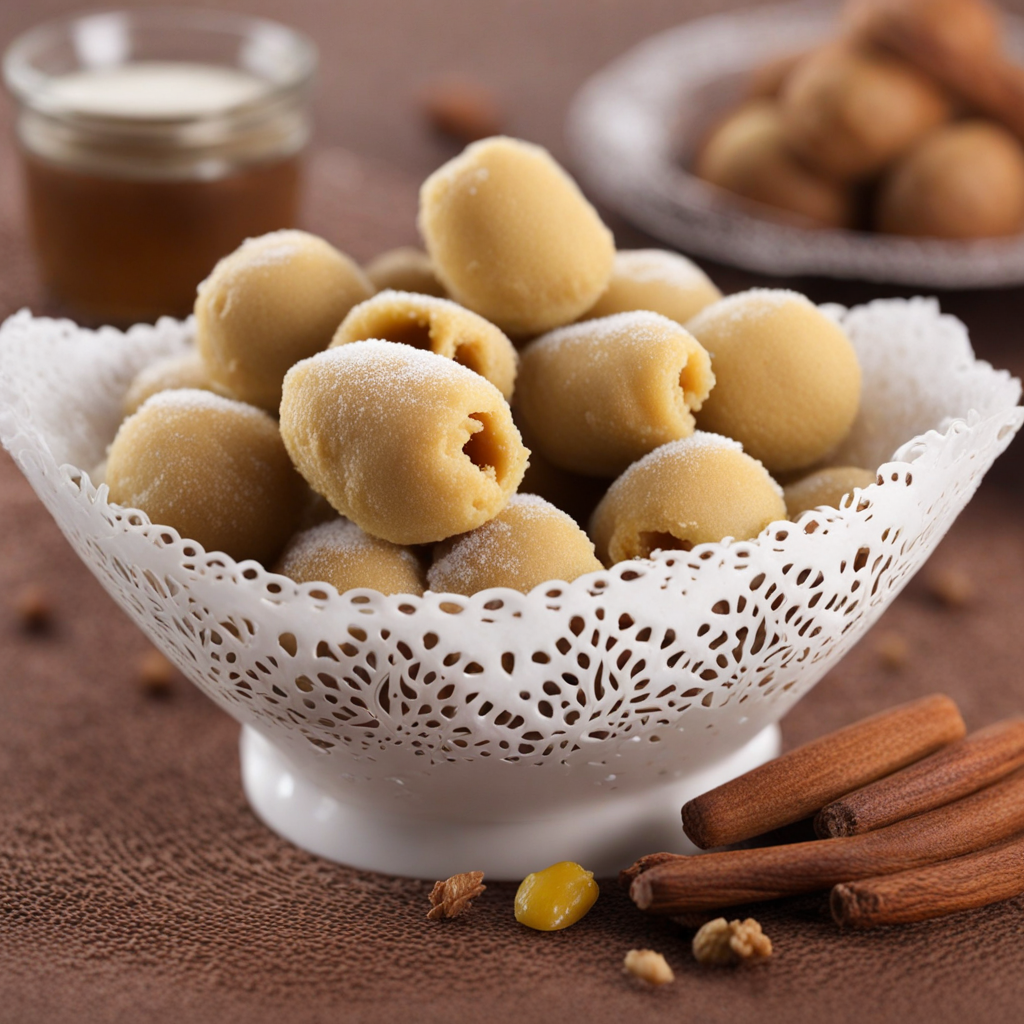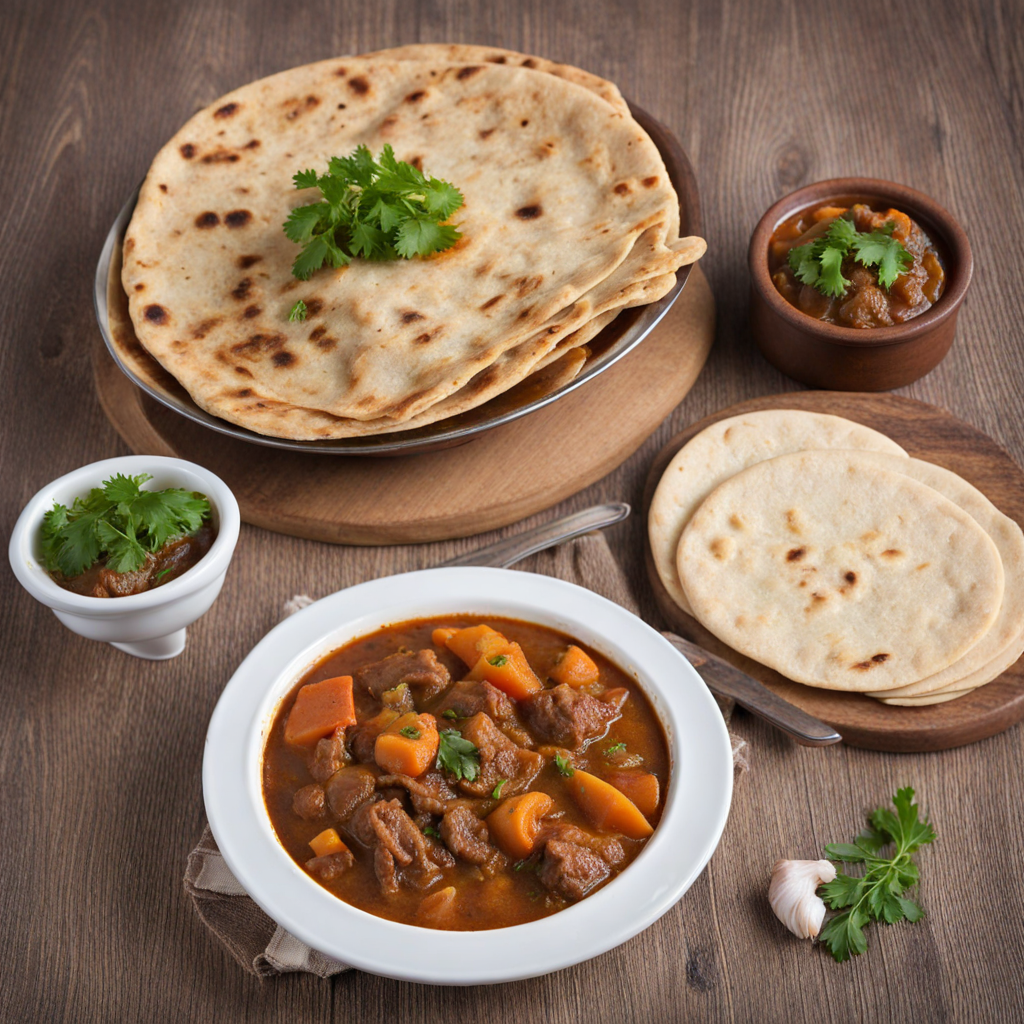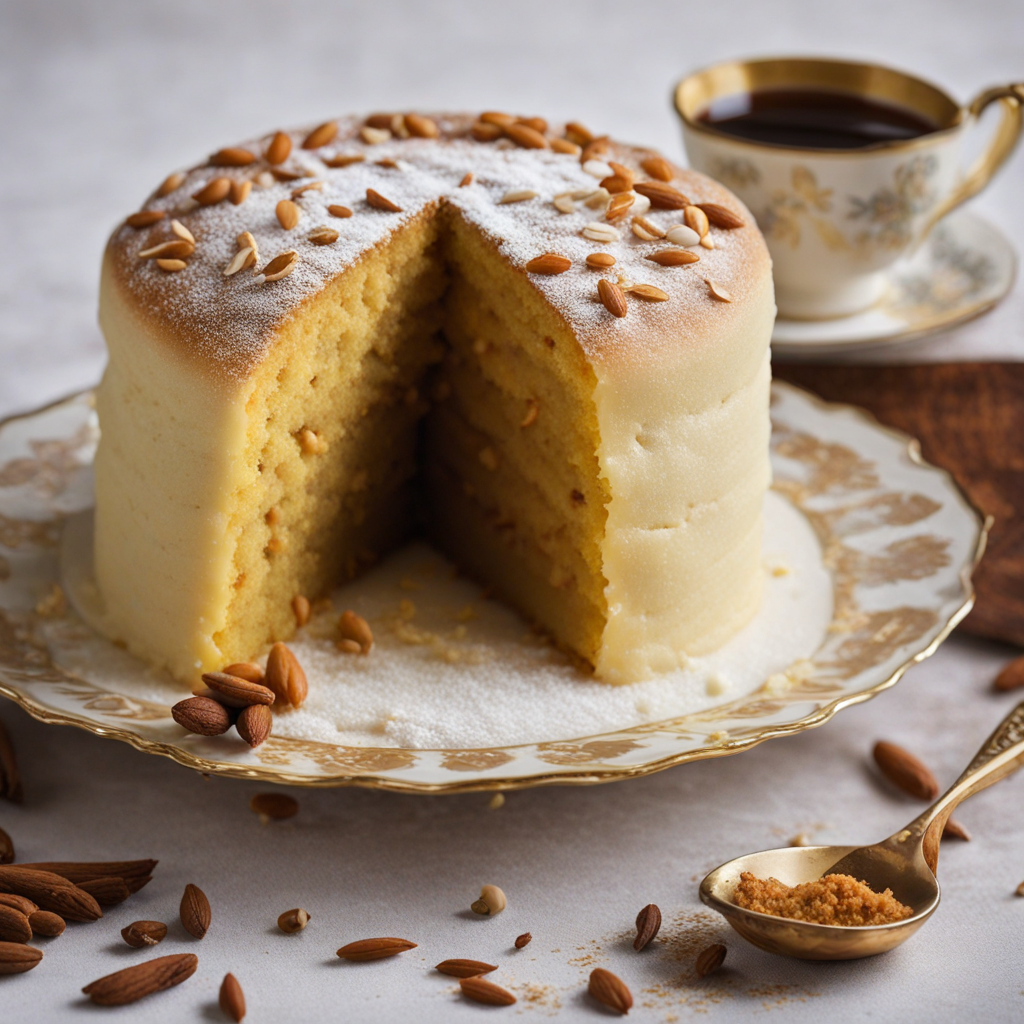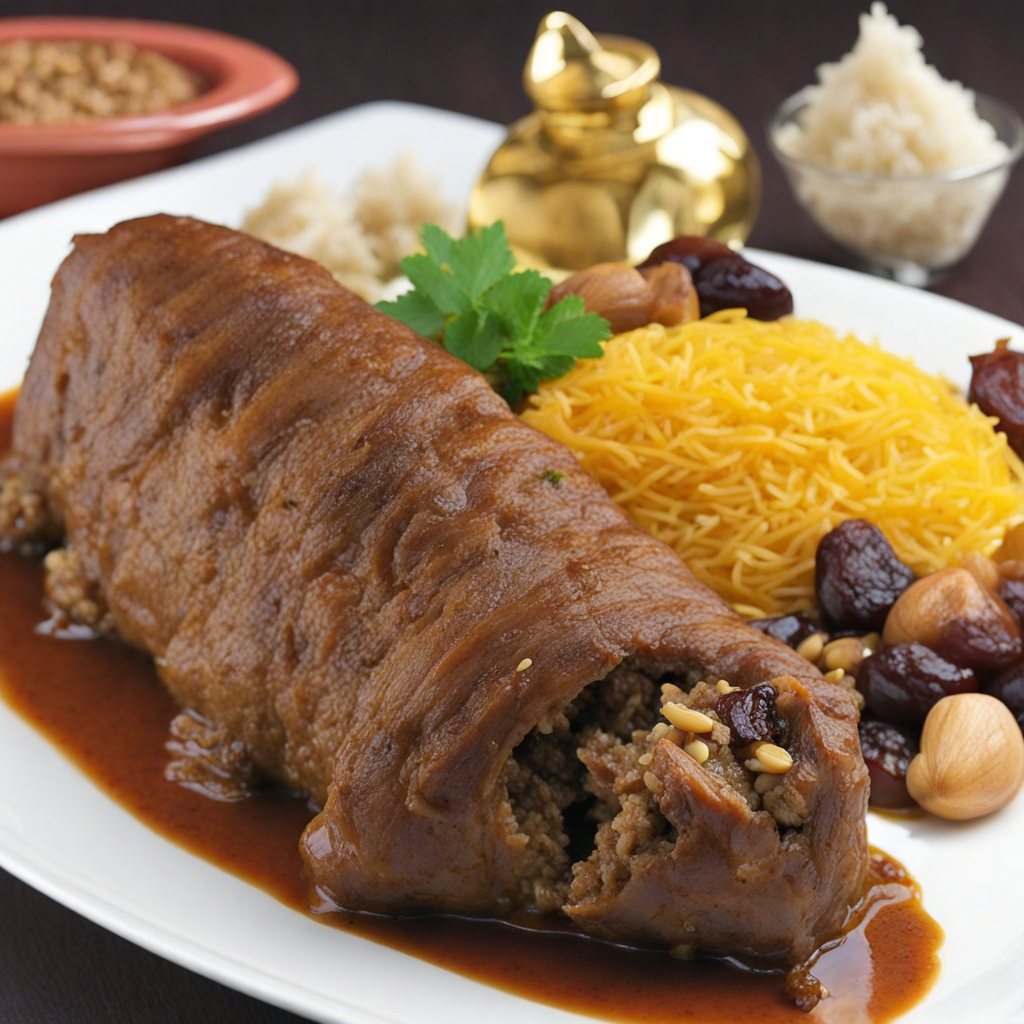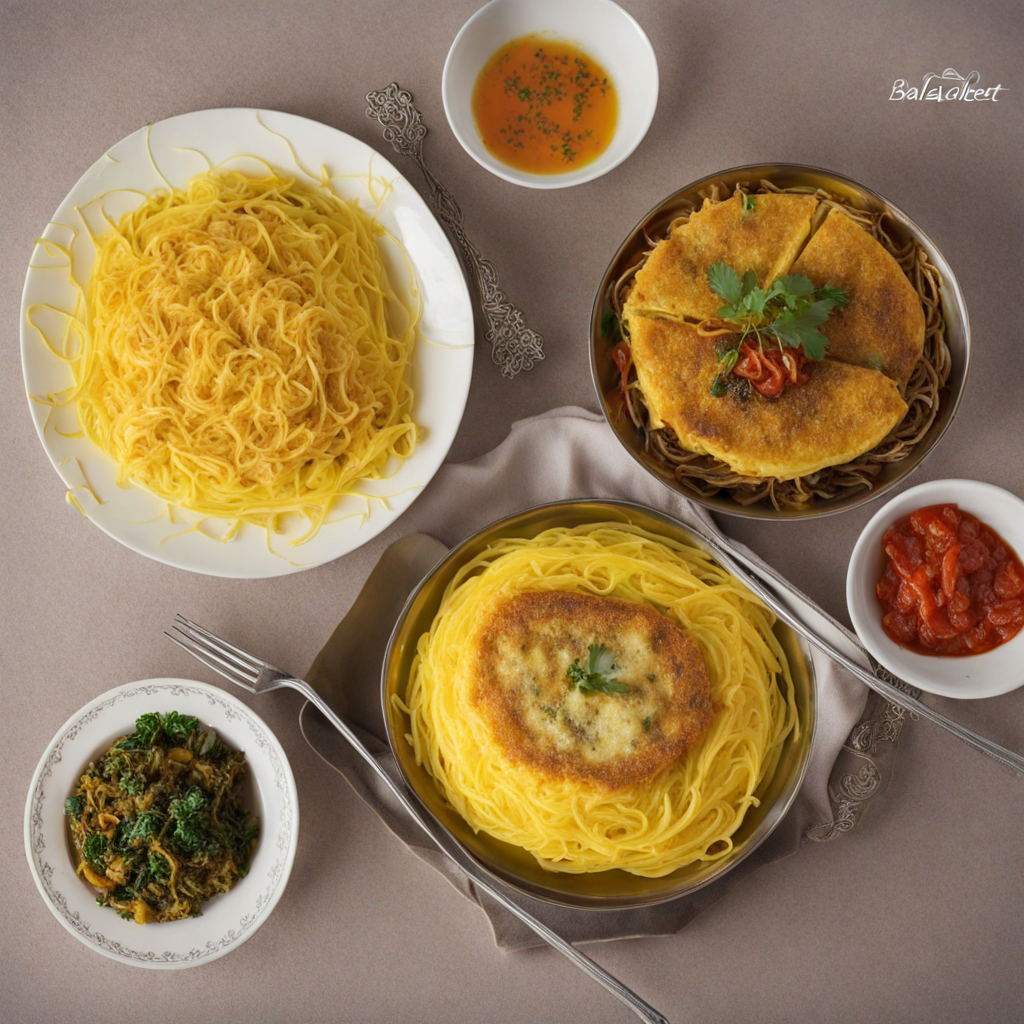Khabees
Khabees is a traditional Kuwaiti dessert that embodies the rich and diverse flavors of the region. This sweet treat is primarily made from a base of flour, sugar, and spices, combined with dates or date syrup to create a luscious, sticky consistency. The use of cardamom and saffron not only enhances its aroma but also adds a unique depth of flavor that sets Khabees apart from other desserts. The mixture is often cooked until it reaches a thick, paste-like consistency, which is then flattened and cut into pieces, resembling a fudge-like texture that melts in your mouth. The charm of Khabees lies not just in its delightful flavor but also in its preparation. Traditionally, it is prepared during special occasions and gatherings, making it a symbol of hospitality in Kuwaiti culture. Each family may have its own unique recipe, allowing for variations in sweetness and spice levels. Some might incorporate nuts like almonds or pistachios, adding a crunchy contrast to the soft dessert. As you take a bite, the combination of sweet and earthy tones dances on your palate, transporting you to the heart of Kuwait's culinary heritage. Served warm or at room temperature, Khabees is often accompanied by a cup of Arabic coffee or tea, enhancing the overall experience. The interplay of flavors and textures makes it an ideal treat for those looking to explore new tastes. Whether enjoyed at a festive gathering or as a comforting snack, Khabees offers a delicious glimpse into the rich traditions of Kuwaiti cuisine, making it a must-try for anyone eager to expand their culinary horizons.
How It Became This Dish
Origin of خبيص خبيص, a traditional Kuwaiti dish, is rooted in the rich culinary heritage of the Arabian Peninsula. It is believed to have originated in the coastal regions of the Gulf, where the availability of date palms, wheat, and spices influenced the local diet. The dish primarily consists of a mixture of ground wheat, dates, and various spices, making it a nutritious and energy-dense food, perfect for the harsh desert environment. The use of dates, a staple in Arabian cuisine, signifies the importance of this fruit in the region, not only as a food source but also as a symbol of hospitality and generosity. Historically, خبيص was prepared by Bedouin tribes as a portable meal during long journeys across the desert. The ingredients were easy to carry and could be easily mixed and prepared on the go. This practicality made it a popular choice for nomadic lifestyles, where access to cooking facilities was limited. As trade routes developed and communities began to settle, خبيص evolved from a simple travel food to a beloved dish enjoyed during various occasions and gatherings. \n\n Cultural Significance The cultural significance of خبيص in Kuwait extends beyond its nutritional value; it embodies the spirit of Kuwaiti hospitality. Traditionally, this dish is served during celebrations and gatherings, such as weddings and religious holidays like Eid. Its preparation often becomes a communal activity, with family members working together to create the dish, fostering a sense of togetherness and shared heritage. In Kuwaiti culture, serving خبيص to guests is a gesture of welcome and respect. It reflects the deep-rooted values of hospitality that are integral to the region's identity. The dish is often accompanied by Arabic coffee, further enhancing the experience of sharing and connection among family and friends. The act of sharing food, particularly a dish with such historical roots, reinforces social bonds and cultural traditions, making خبيص not just a meal but a symbol of community. \n\n Development Over Time Over the years, خبيص has undergone various adaptations and transformations, reflecting the changing culinary landscape of Kuwait. With the influence of globalization and the introduction of new ingredients and cooking techniques, contemporary versions of خبيص may include additional flavors such as cinnamon, cardamom, and nuts, which enhance its taste and texture. While the traditional recipe remains cherished, the dish has become more versatile, allowing for personal variations that cater to modern palates. Moreover, the rise of food tourism in Kuwait has brought renewed interest in traditional dishes like خبيص. Culinary enthusiasts and tourists seek authentic experiences, often turning to local markets and home kitchens to learn about and taste traditional foods. This has led to a revival of interest in ancient recipes and cooking methods, ensuring that dishes like خبيص remain relevant in today's culinary scene. Cooking classes and food festivals celebrating Kuwaiti cuisine have also contributed to the preservation of this dish, allowing younger generations to connect with their heritage. \n\n Ingredients and Preparation The basic ingredients used in خبيص highlight the simplicity and resourcefulness of traditional Kuwaiti cooking. The primary components include finely ground wheat, which serves as the base, and dates, which add natural sweetness and richness. The process begins with milling the wheat and then combining it with water to form a dough-like consistency. The dough is then sweetened with crushed dates and flavored with a blend of spices, including cardamom and cinnamon, which are common in Gulf cuisine. Traditionally, خبيص is cooked slowly over low heat, allowing the flavors to meld together and develop depth. The use of a large, flat pan or griddle is common, and the dish is often shaped into flat cakes or baked into a thicker form. Once cooked, it is typically served warm and can be garnished with nuts or drizzled with honey for added sweetness. This method of preparation not only highlights the dish's humble roots but also emphasizes the importance of patience and care in traditional cooking practices. \n\n Modern Interpretations In recent years, chefs and home cooks alike have begun to experiment with خبيص, creating modern interpretations that incorporate contemporary culinary techniques and flavors. Some variations include the addition of chocolate, coconut, or even savory ingredients such as cheese, allowing for an exciting twist on the classic dish. This innovation has sparked interest among younger generations, who are eager to explore their culinary heritage while also embracing new culinary trends. Food bloggers and social media influencers have played a significant role in popularizing خبيص, sharing recipes and showcasing the dish's preparation process. This visibility has contributed to a broader appreciation for Kuwaiti cuisine and its unique flavors, encouraging more people to try making خبيص at home or seeking it out in restaurants. As a result, the dish has found a place not only in traditional Kuwaiti households but also in the diverse culinary landscape of the Gulf region. \n\n Conclusion In summary, خبيص is more than just a dish; it is a reflection of Kuwait's rich history, cultural values, and evolving culinary traditions. From its origins as a practical travel food for the Bedouins to its status as a beloved dish served at celebrations, خبيص has maintained its significance throughout the years. As it continues to adapt and thrive in the modern culinary scene, this traditional dish remains a testament to the resilience and creativity of Kuwaiti culture. Whether enjoyed in its classic form or as a contemporary reinterpretation, خبيص will undoubtedly continue to play a vital role in the culinary heritage of Kuwait for generations to come.
You may like
Discover local flavors from Kuwait


